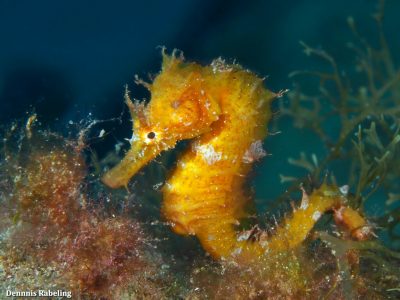Citizen scientists contribute vital information about 35 seahorse species: their geographic ranges, habitats, and pregnancy seasonality
Thanks to diligent observers, seahorses, those enigmatic and charismatic fish, are not only being discovered in new habitats and expanded geographic ranges, they are also being found at new ocean depths. While their capacity for male pregnancy has long fascinated people, new information on sex ratio and pregnancy seasonality has been discovered by, well, you. […]
New FCRR: Understanding the fishers to change the fishery in the bottom trawl industry in India
The report unravels the drivers and motivations that entice fishers and the fishery to start, engage in, and stop bottom trawling in India. Understanding the nuances within communities rather than viewing them as one entity is paramount for designing equitable policies. Moreover, the study highlights a pressing reality: fishers do not always want to fish and are sometimes forced to remain in the bottom trawl industry. Recognizing and addressing these insights are paramount in effectively constraining bottom trawling.
New FCRR: Implementation of CITES Appendix II listing for seahorses in the context of export bans and suspensions
Despite measures taken by the Convention on International Trade in Endangered Species (CITES), most dried seahorse exports appear to have gone underground, and smuggling is now the norm. The report explores the many reasons driving this illegal trade and then identifies ways forward.
New FCRR: Comprehensive review of advances in life history knowledge for 35 seahorse species, drawn from community science
In this Fisheries Centre Research Report the authors have undertaken the task of synthesizing and analyzing data contributed to the iSeahorse community science project.
Global seahorse conservation platform celebrates citizen science milestone
Dennis Rabeling’s observation of the short-snouted seahorse (Hippocampus hippocampus) species, was citizen community science platform iSeahorse’s 10,000th observation.
New Working Paper: A practical approach to meeting national obligations for sustainable trade under CITES
This pragmatic geographic analysis provides managers in India with a tractable route towards regulating seahorse exports at sustainable levels.
New Fisheries Centre Research Report (FCRR)
Implementing CITES Appendix II listings for marine fishes: a novel framework and a constructive analysis
New measurements shows seadragons grow slowly, but in a fashion similar to other bony fish
Despite their odd shape, which makes them resemble a tuft of seaweed, common and leafy seadragons grow in the same fashion as other bony fish, new research has found.
CITES makes a difference to the trade in live seahorses
Project Seahorse reports on the first quantitative analysis of how CITES has influenced the international trade in marine fishes.
Changes in the international trade in live seahorses (Hippocampus spp.) after their listing on CITES Appendix II
This new Fisheries Centre Research Report (FCRR) investigates the international live trade in seahorses.








